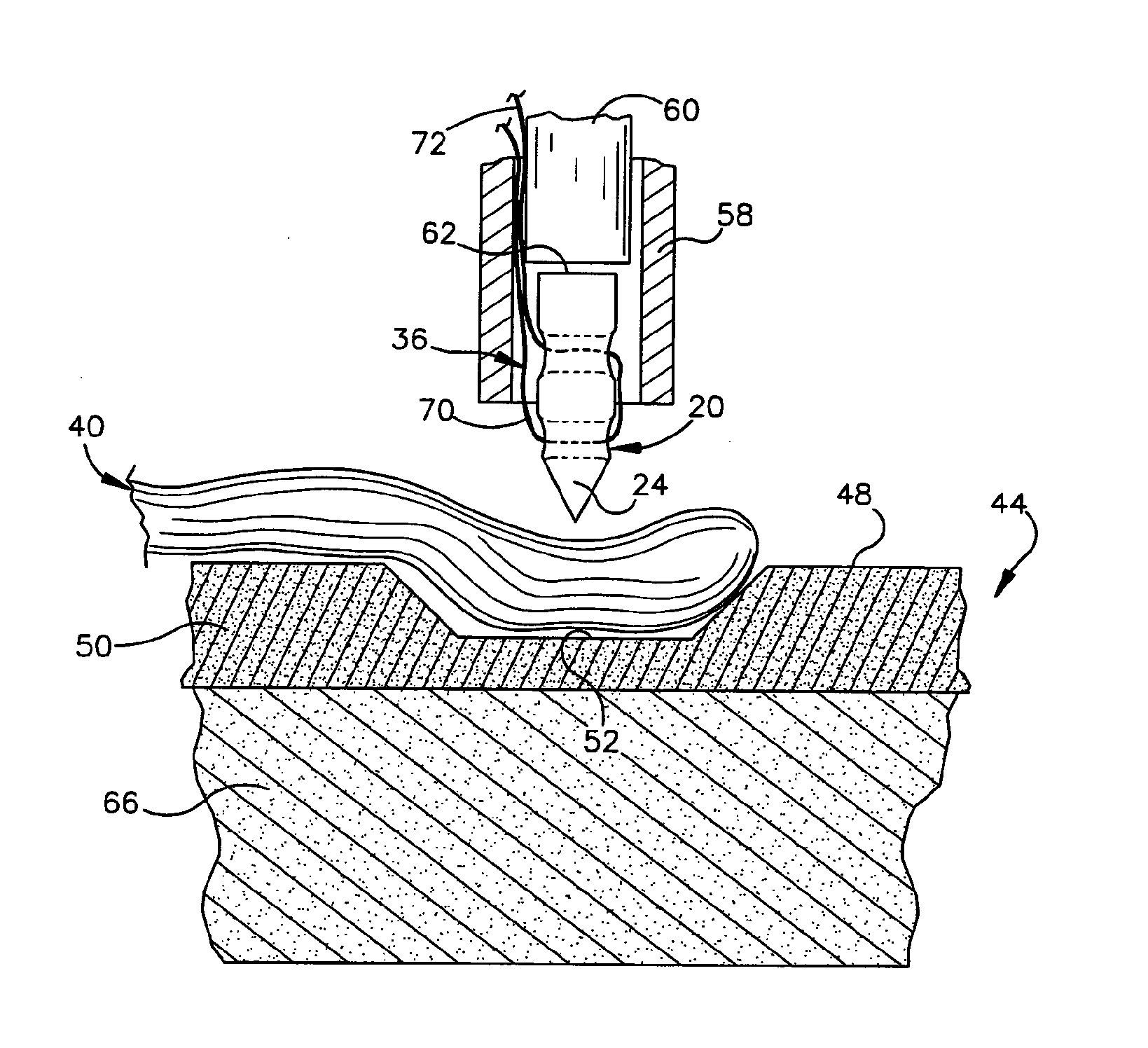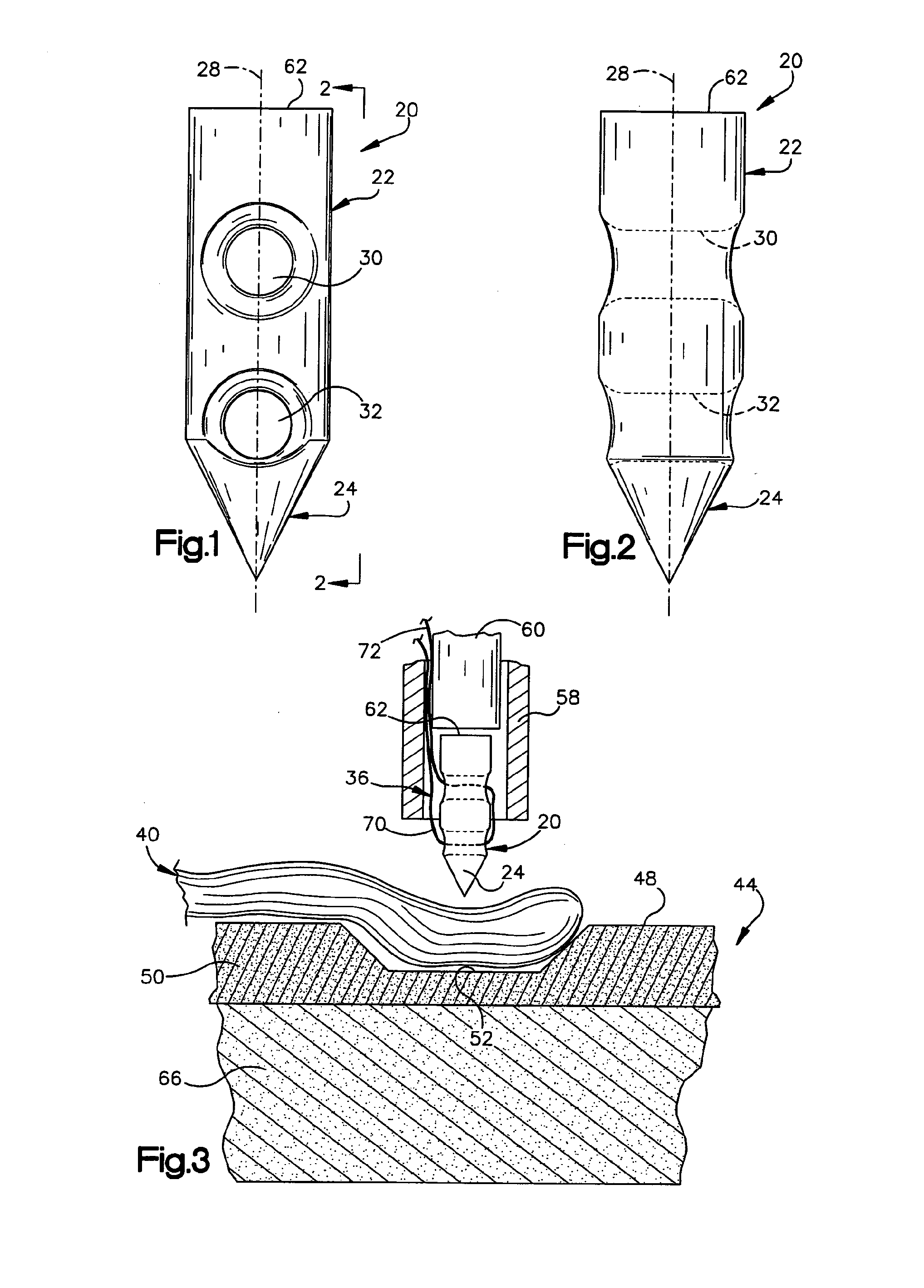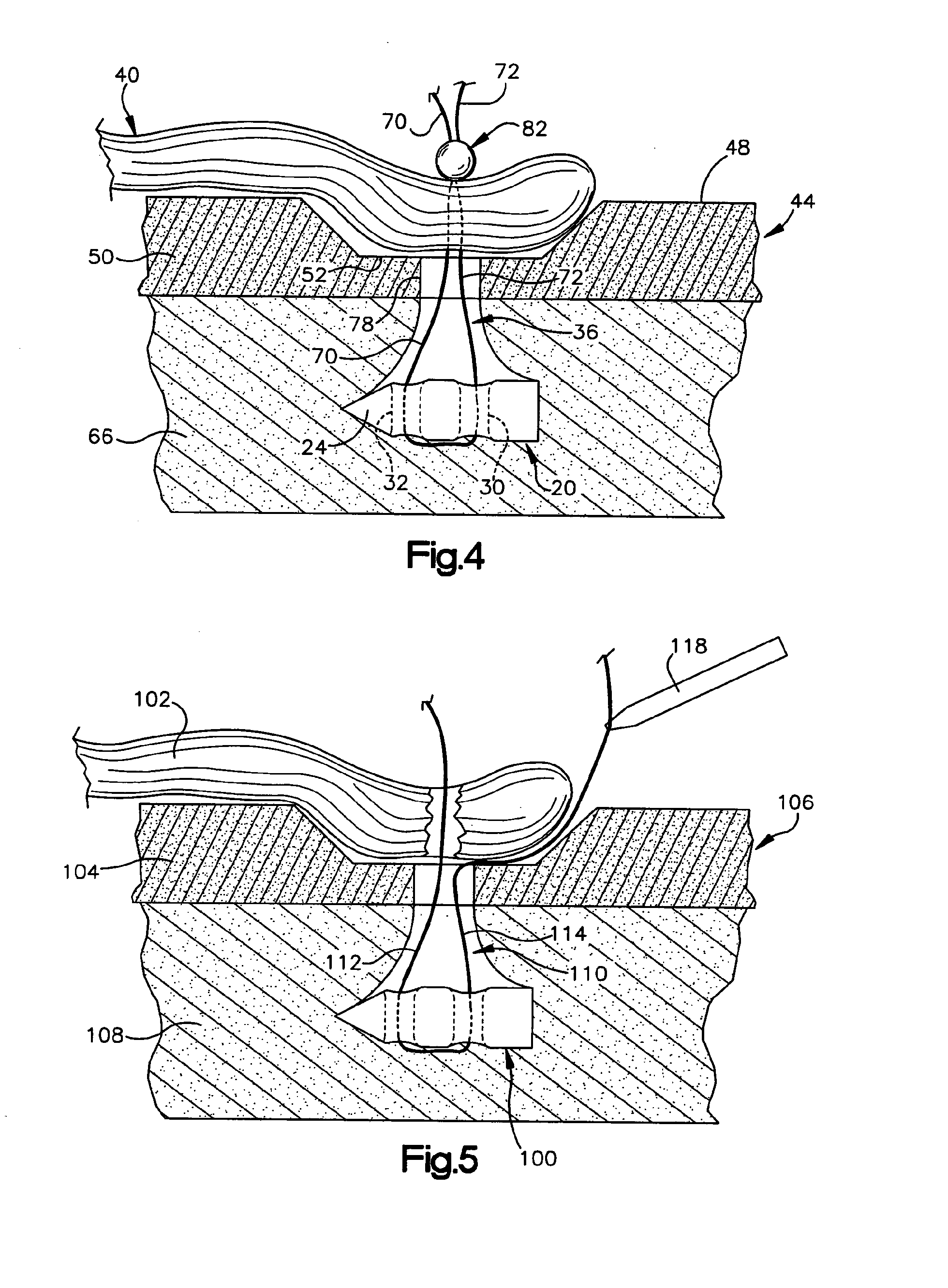Method of connecting body tissue to a bone
a bone and body tissue technology, applied in the field of methods and equipment, can solve problems such as the bonding of overlapping areas on sutures, and achieve the effect of avoiding the bonding of overlapping areas
- Summary
- Abstract
- Description
- Claims
- Application Information
AI Technical Summary
Problems solved by technology
Method used
Image
Examples
embodiment
of FIG. 12
[0152]In the embodiment of the invention illustrated in FIG. 11, a suture retainer 244 is connected with the sections 262 and 264 of the suture 222. In the embodiment of the invention illustrated in FIG. 12, the sections of the suture are connected to each other. Since the embodiment of the invention illustrated in FIG. 12 is similar to the embodiments of the invention illustrated in FIGS. 1-11, similar terminology will be utilized to identify similar components. It should be understood that one or more features of the embodiments of the invention illustrated in FIGS. 1-11 may be used with the embodiment of the invention illustrated in FIG. 12.
[0153]The apparatus 420 is utilized to secure a suture 422 relative to soft body tissue 424 and a bone 426. The suture 422 may have the same construction as the suture 36 of FIGS. 3 and 4. The specific suture 422 is a monofilament having a continuous cylindrical outer side surface. However, the suture 422 may be formed a plurality of...
PUM
 Login to View More
Login to View More Abstract
Description
Claims
Application Information
 Login to View More
Login to View More - R&D
- Intellectual Property
- Life Sciences
- Materials
- Tech Scout
- Unparalleled Data Quality
- Higher Quality Content
- 60% Fewer Hallucinations
Browse by: Latest US Patents, China's latest patents, Technical Efficacy Thesaurus, Application Domain, Technology Topic, Popular Technical Reports.
© 2025 PatSnap. All rights reserved.Legal|Privacy policy|Modern Slavery Act Transparency Statement|Sitemap|About US| Contact US: help@patsnap.com



